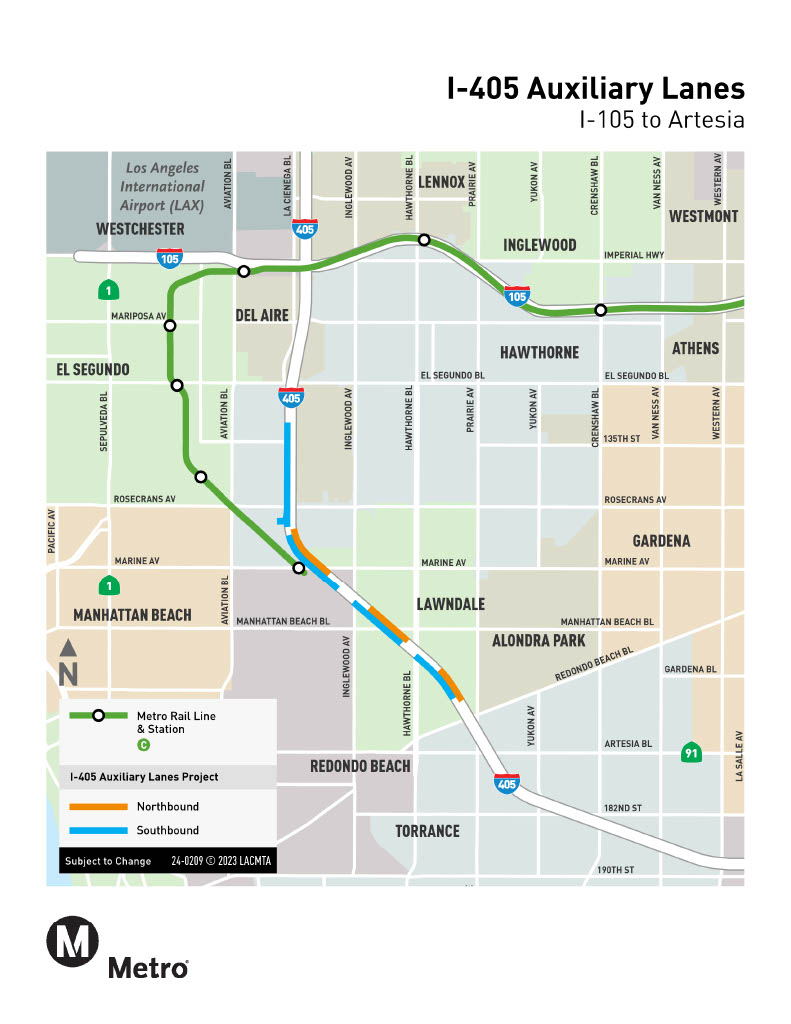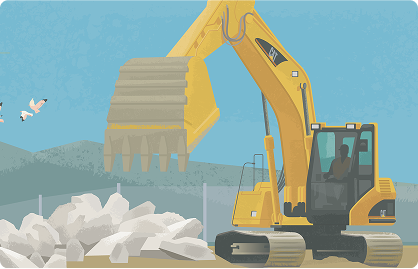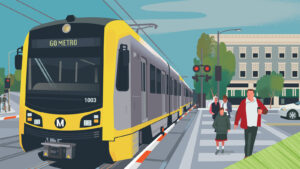Lorem ipsum dolor sit amet, consectetur adipiscing elit. Nulla non lorem vitae erat tempor elementum.
TEST Metro C Line Extension to Torrance (CLET)
Keeping the South Bay connected with enhanced transit service.

About

The Metro C Line (Green) Extension to Torrance aims to significantly enhance your travel options in LA County by extending light rail from the Metro Redondo Beach Station to the new Torrance Transit Center.
As part of our ongoing efforts to improve connectivity across the South Bay, this project will offer a much-needed alternative to the congested I-405 corridor, linking you directly with major Metro Rail lines for easier access to regional destinations.

Label
Lorem ipsum dolor sit amet
Lorem ipsum dolor sit amet, consectetur adipiscing elit. Nulla non lorem vitae erat tempor elementum.
Label
Lorem ipsum dolor sit amet
Lorem ipsum dolor sit amet, consectetur adipiscing elit. Nulla non lorem vitae erat tempor elementum.
Project Timeline
The Metro board approved this project to connect more of the South Bay by light rail.
This initial phase involves identifying the need for the project, conducting preliminary studies, and developing potential solutions.
Metro determined if extending the C Line was possible and worthwhile.
Read: C Line Feasibility Study
Metro explored multiple route options in more detail.
Read: C Line Corridor Study
Metro planners narrowed down route options based on analysis and input.
During this phase, Metro identified potential environmental impacts and developed plans to minimize those impacts.
Project planners study existing issues this project will address and alternatives that will be considered, including not building the project. Add Description Here
After all studies are complete, a draft environmental document, including a list of project alternatives, is ready for public review.
Metro planners will identify the project to be recommended for final environmental review. Outstanding issues with the preferred alternative are studied.
During this phase detailed plans and designs are developed for a project, including tasks like refining conceptual plans, conducting utility coordination, and obtaining necessary approvals.
This phase involves planning, designing, and building new or expanded transit infrastructure, including rail lines, stations, and related facilities, with a focus on improving transit connectivity and mobility.
This phase encompasses the activities involved in ensuring the safe and efficient operation of the transit system, including facilities for maintenance, storage, and training, as well as the personnel who perform these functions

Support for Community
Metro partners with local businesses and residents to strengthen communities through support programs and engagement. Get involved and shop local during construction.

Support for Business
Metro provides financial assistance and resources to help businesses stay resilient during construction. Explore funding opportunities and register for construction-related programs.
FAQs
This project is currently in environmental review that is leading to the release of a Draft Environmental Impact Report (DEIR). This is the second of five major phases in the project development process, followed by final design, construction, and operations. The environmental process is expected to generate an inclusive vision that balances the unique needs of diverse corridor stakeholders, including future riders, through ongoing dialogue with project stakeholders and communities. As the regional transportation planning agency for Los Angeles County, Metro is leading the environmental analysis consistent with the requirements of both the California Environmental Quality Act (CEQA) and National Environmental Policy Act (NEPA).
Click edit button to change this text. Lorem ipsum dolor sit amet, consectetur adipiscing elit. Ut elit tellus, luctus nec ullamcorper mattis, pulvinar dapibus leo.
Click edit button to change this text. Lorem ipsum dolor sit amet, consectetur adipiscing elit. Ut elit tellus, luctus nec ullamcorper mattis, pulvinar dapibus leo.
Click edit button to change this text. Lorem ipsum dolor sit amet, consectetur adipiscing elit. Ut elit tellus, luctus nec ullamcorper mattis, pulvinar dapibus leo.
Contact the Project Team

Got questions or ideas? Our project team is here to listen.

Item Title
Item Content

